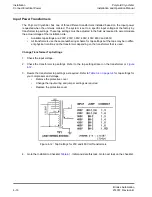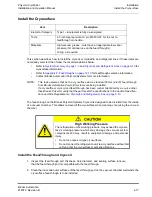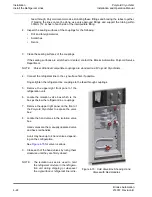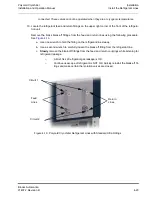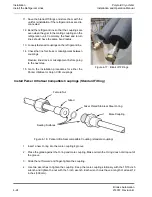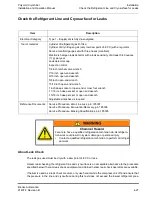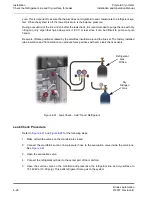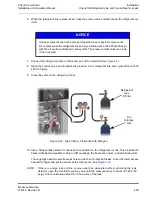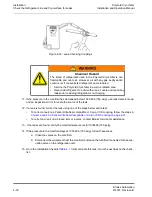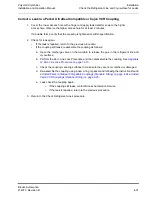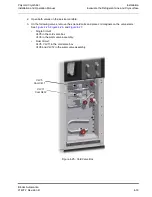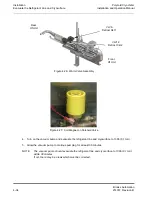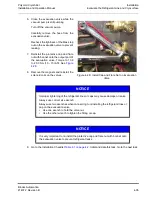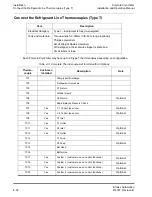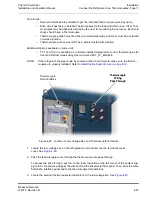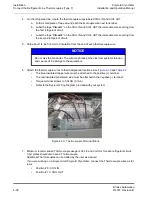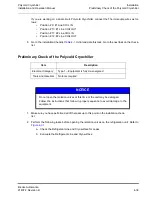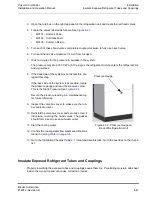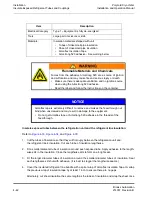
Polycold Cryochiller
Installation
Installation and Operation Manual
Check the Refrigerant Line and Cryosurface for Leaks
Brooks Automation
214072 Revision B
4-29
6.
When the refrigerant line is pressurized, close the suction valve and disconnect the refrigerant cyl-
inder.
7.
Connect the nitrogen cylinder to the center port of the manifold. See
8.
Open the suction valve and increase the pressure in the refrigerant line and cryosurface to 1030
kPa (150 psig).
9.
Close the valve on the nitrogen cylinder.
10. Use a halogen leak detector to check each connection in the refrigerant circuits. This includes the
Parker UltraSeal compatible or Cajon VCR couplings, the Evacuation Valve, and all brazed joints.
The couplings have two small access holes on each nut to help find leaks. Cover the lower access
hole with a finger and put the sensor at the higher hole. See
NOTE:
If there is a large leak and the source cannot be pinpointed without activating the leak
detector, open the manifold's suction valve until the pressure drops to about 345 kPa (50
psig). This should allow detection of the source of the leak.
NOTICE
Improper pressurization can damage refrigerant lines or system components.
Do not pressurize the refrigerant line and cryosurface above 3100 kPa (450 psig)
with the cryosurface attached to the system. The pressure relief valve may leak
if it is activated.
Figure 4-22: Leak Check - Pressurize with Nitrogen
Refrigerant
Gas
R134a
Dry
Nitrogen
Gas


